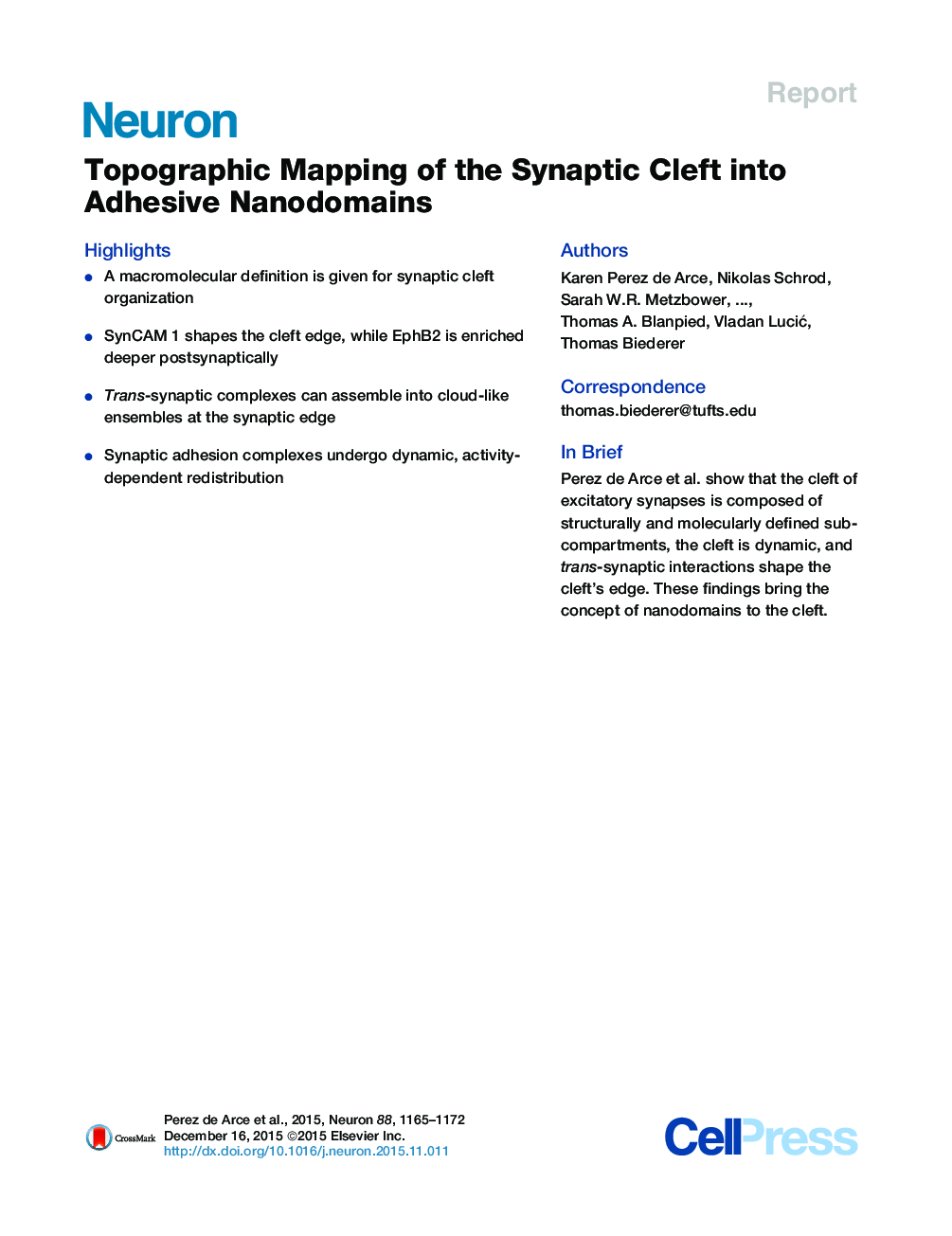| Article ID | Journal | Published Year | Pages | File Type |
|---|---|---|---|---|
| 4320754 | Neuron | 2015 | 8 Pages |
•A macromolecular definition is given for synaptic cleft organization•SynCAM 1 shapes the cleft edge, while EphB2 is enriched deeper postsynaptically•Trans-synaptic complexes can assemble into cloud-like ensembles at the synaptic edge•Synaptic adhesion complexes undergo dynamic, activity-dependent redistribution
SummaryThe cleft is an integral part of synapses, yet its macromolecular organization remains unclear. We show here that the cleft of excitatory synapses exhibits a distinct density profile as measured by cryoelectron tomography (cryo-ET). Aiming for molecular insights, we analyzed the synapse-organizing proteins Synaptic Cell Adhesion Molecule 1 (SynCAM 1) and EphB2. Cryo-ET of SynCAM 1 knockout and overexpressor synapses showed that this immunoglobulin protein shapes the cleft’s edge. SynCAM 1 delineates the postsynaptic perimeter as determined by immunoelectron microscopy and super-resolution imaging. In contrast, the EphB2 receptor tyrosine kinase is enriched deeper within the postsynaptic area. Unexpectedly, SynCAM 1 can form ensembles proximal to postsynaptic densities, and synapses containing these ensembles were larger. Postsynaptic SynCAM 1 surface puncta were not static but became enlarged after a long-term depression paradigm. These results support that the synaptic cleft is organized on a nanoscale into sub-compartments marked by distinct trans-synaptic complexes.
